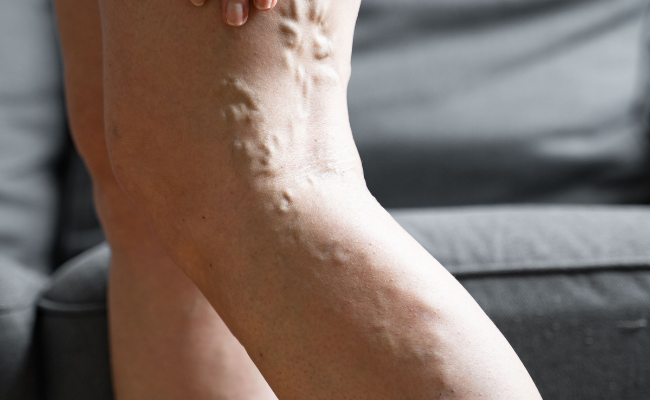How to Treat Deep Vein Thrombosis?
- February 14, 2024
- No Comments

What is Deep Vein Thrombosis (DVT)?
Deep Vein Thrombosis (DVT) is a severe medical condition characterized by the formation of blood clots within the deep veins, predominantly in the legs. These clots have the potential to impede blood circulation, and if dislodged, they can lead to life-threatening complications like pulmonary embolism by traveling to the lungs. DVT necessitates immediate diagnosis and treatment to mitigate risks. It typically arises due to venous injury or sluggish blood flow, resulting in the development of a thrombus (blood clot) in the deep veins. These clots can partially or completely obstruct blood flow, commonly occurring in the lower leg, thigh, or pelvis, although they can manifest in other areas such as the arms, brain, intestines, liver, or kidneys.
Why Does Deep Vein Thrombosis Occur?
DVT often develops due to a combination of factors known as Virchow's triad: venous stasis (reduced blood flow), hypercoagulability (increased clotting), and endothelial injury (damage to blood vessel walls). Risk factors for DVT include Prolonged immobility (e.g., long flights or bed rest), Surgery or trauma, Obesity, Pregnancy, Smoking, Hormone replacement therapy or oral contraceptives, Previous history of DVT or family history of clotting disorders
How to Identify Deep Vein Thrombosis?
Symptoms of DVT may include:
- Swelling in the affected leg, often accompanied by pain or tenderness
- Warmth and redness over the affected area
- Dilated veins visible on the surface of the skin
- Discomfort or cramping in the calf muscles
- Unexplained shortness of breath or chest pain (if a clot travels to the lungs)
- If you experience any of these symptoms, it's crucial to seek medical attention immediately for proper diagnosis and treatment.
Treatment Solutions for Deep Vein Thrombosis:
- Anticoagulant Medications: The primary treatment for DVT involves the use of anticoagulant medications, also known as blood thinners, to prevent further clot formation and reduce the risk of complications. Commonly prescribed anticoagulants include warfarin, heparin, and direct oral anticoagulants (DOACs) such as rivaroxaban or apixaban.
- Compression Therapy: Wearing compression stockings can help improve blood flow in the legs and reduce swelling associated with DVT. These specially designed stockings apply pressure to the legs, promoting circulation and preventing blood from pooling in the veins.
- Thrombolytic Therapy: In severe cases of DVT, especially when there is a high risk of complications such as pulmonary embolism, thrombolytic therapy may be recommended. This treatment involves the administration of clot-dissolving medications to rapidly dissolve the blood clot.
- Inferior Vena Cava (IVC) Filter: In rare cases where anticoagulant therapy is contraindicated or ineffective, an IVC filter may be inserted into the inferior vena cava (the large vein that carries blood from the lower body to the heart) to prevent blood clots from traveling to the lungs.
- Lifestyle Modifications: Making lifestyle changes can help reduce the risk of DVT and improve overall vascular health. These may include maintaining a healthy weight, staying physically active, avoiding prolonged periods of immobility, and quitting smoking.
Benefits of Treating Deep Vein Thrombosis:
- Prevention of Complications: Prompt treatment of DVT can prevent complications such as pulmonary embolism, which can be life-threatening.
- Reduction of Symptoms: Anticoagulant therapy and compression stockings can alleviate symptoms such as swelling, pain, and discomfort associated with DVT.
- Prevention of Recurrence: Continued use of anticoagulant medications as prescribed can help prevent the recurrence of DVT and reduce the risk of future blood clots.
- Improved Quality of Life: Effective treatment of DVT allows individuals to resume normal activities without the limitations imposed by the condition, leading to a better quality of life.
- Lower Healthcare Costs: By preventing complications and reducing the need for hospitalization or invasive procedures, early treatment of DVT can result in lower healthcare costs in the long run.
Comments (0)